e m e r g e n c e
what we construct affects individuals and groups,
group behavior does not require hierarchy to yield organic results
group behavior does not require hierarchy to yield organic results
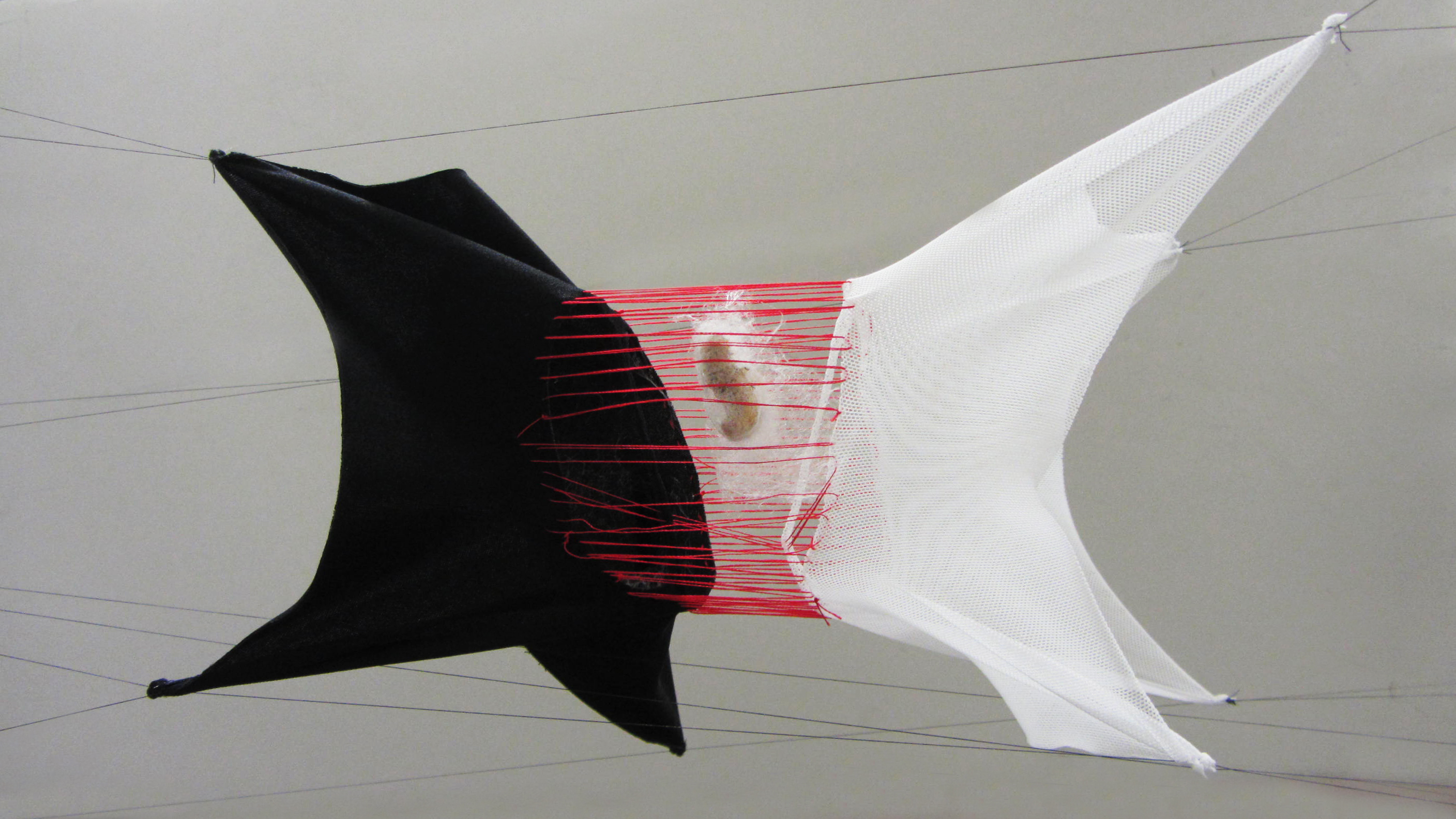
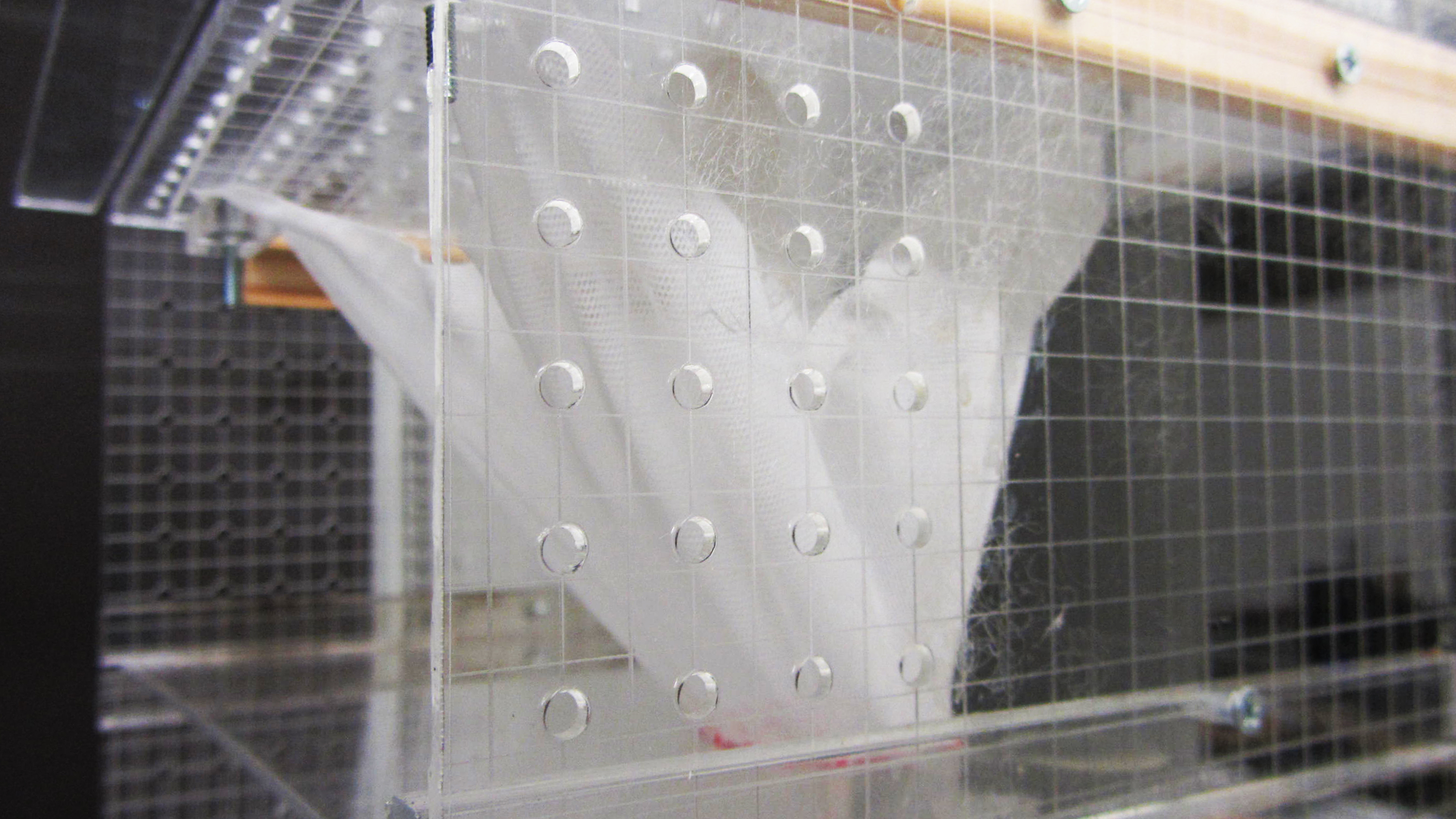
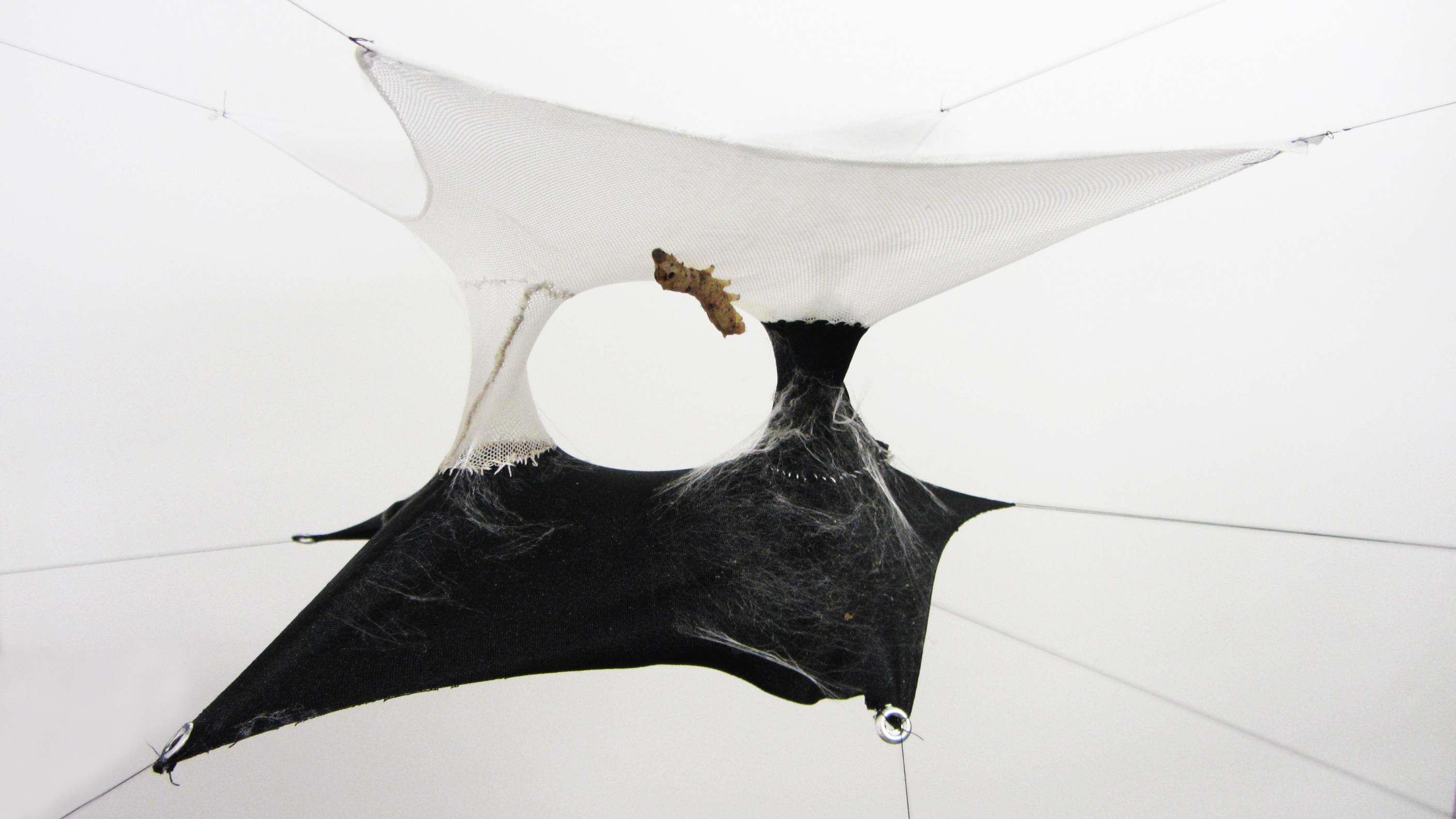
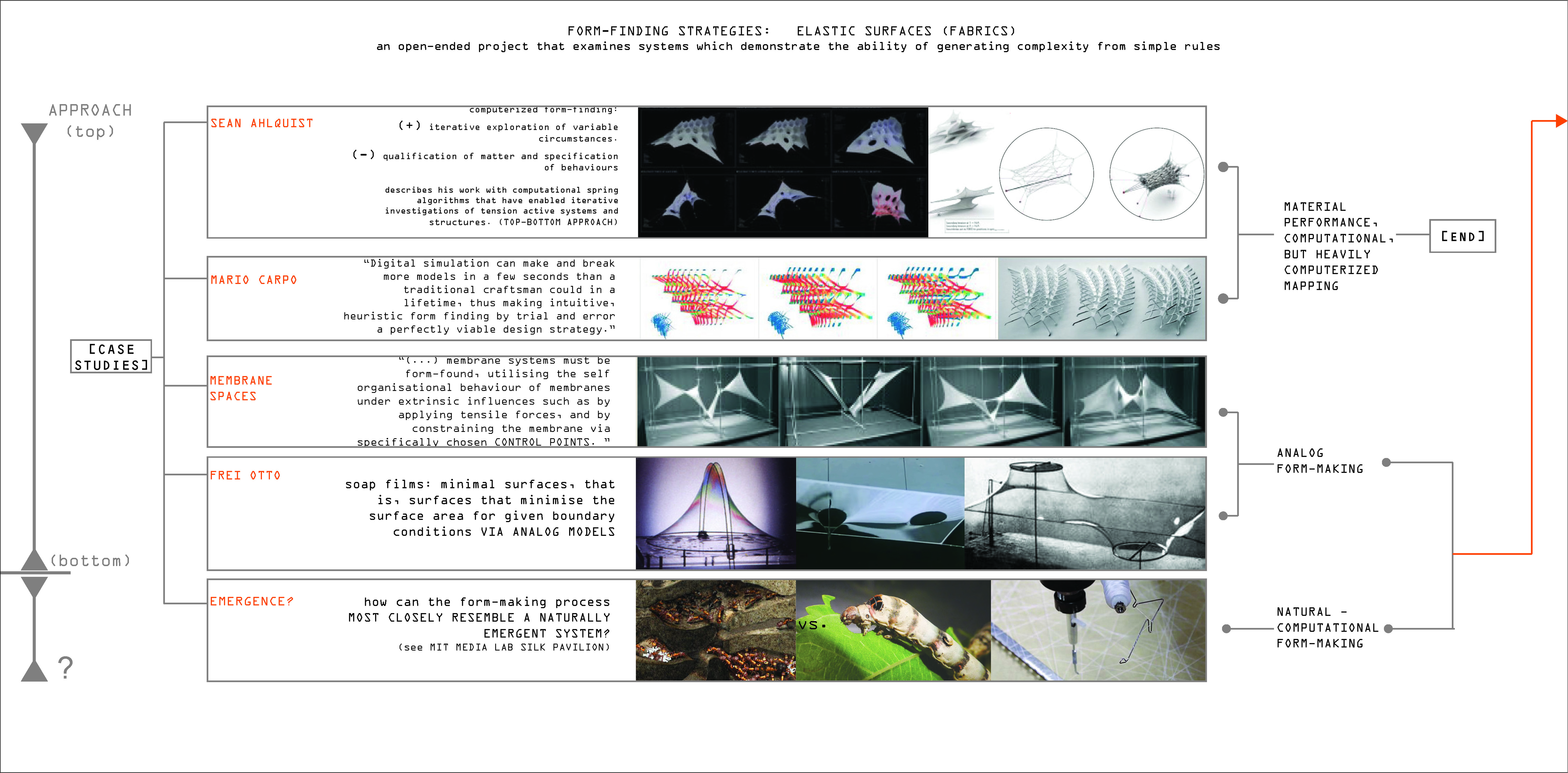
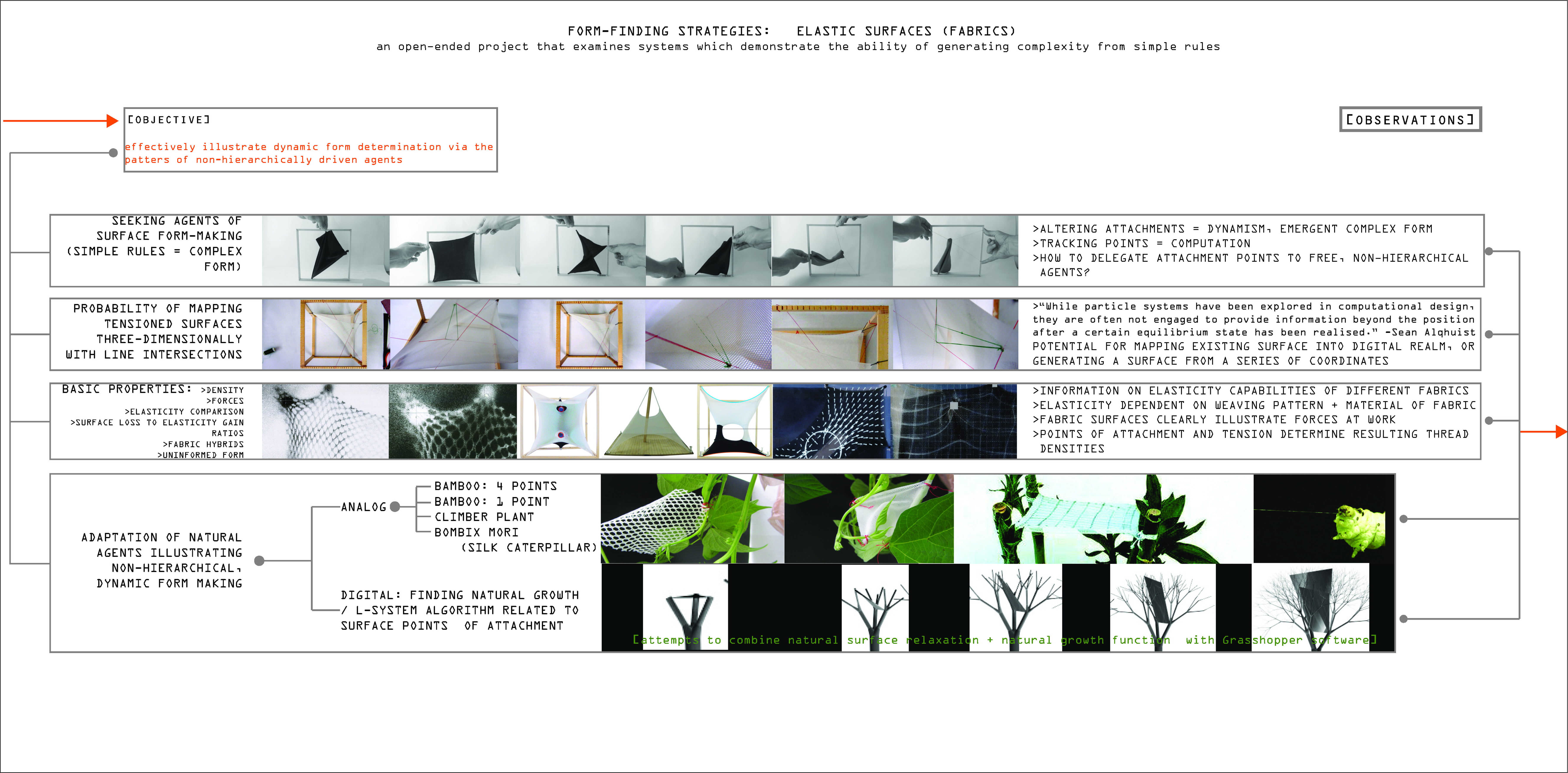
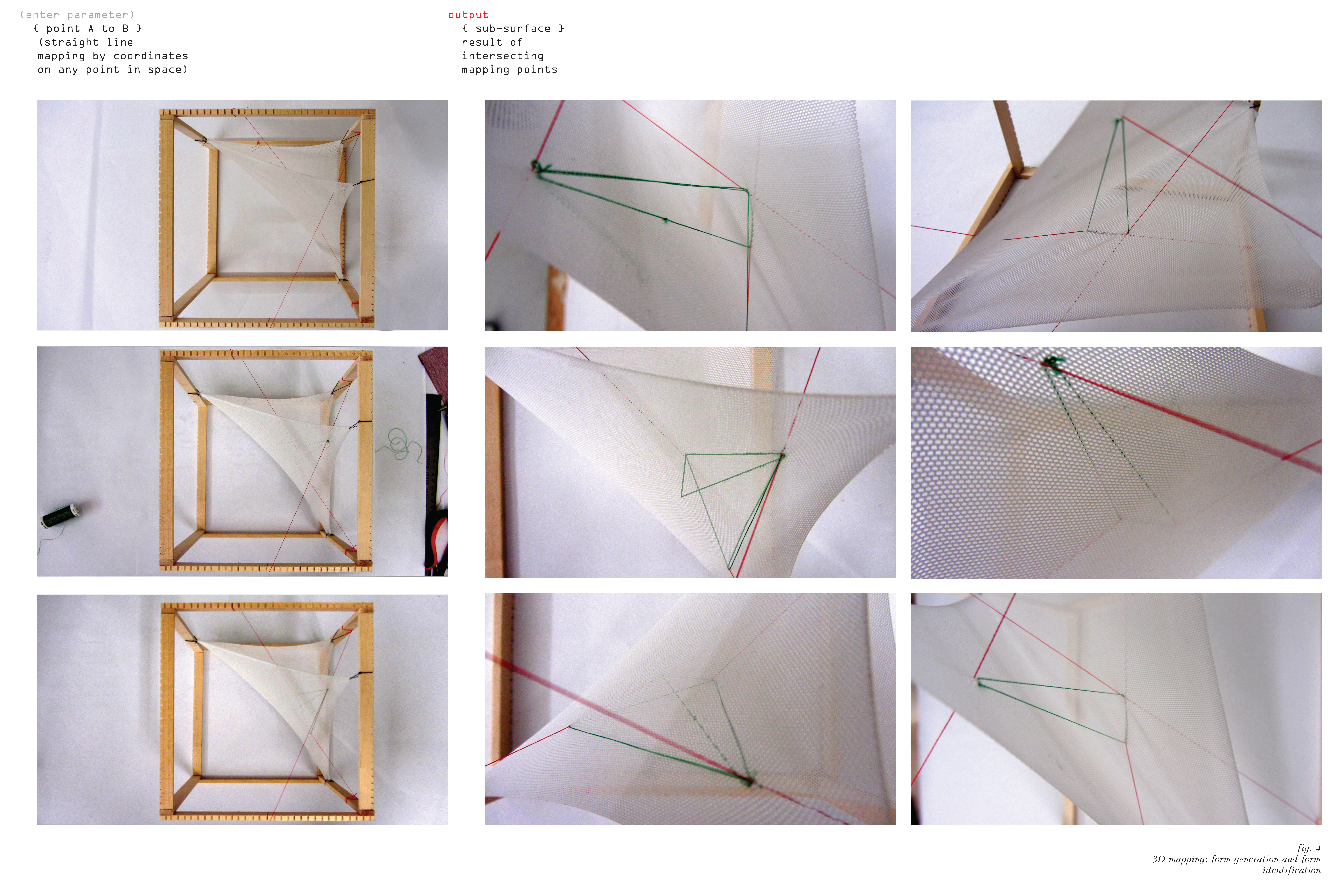
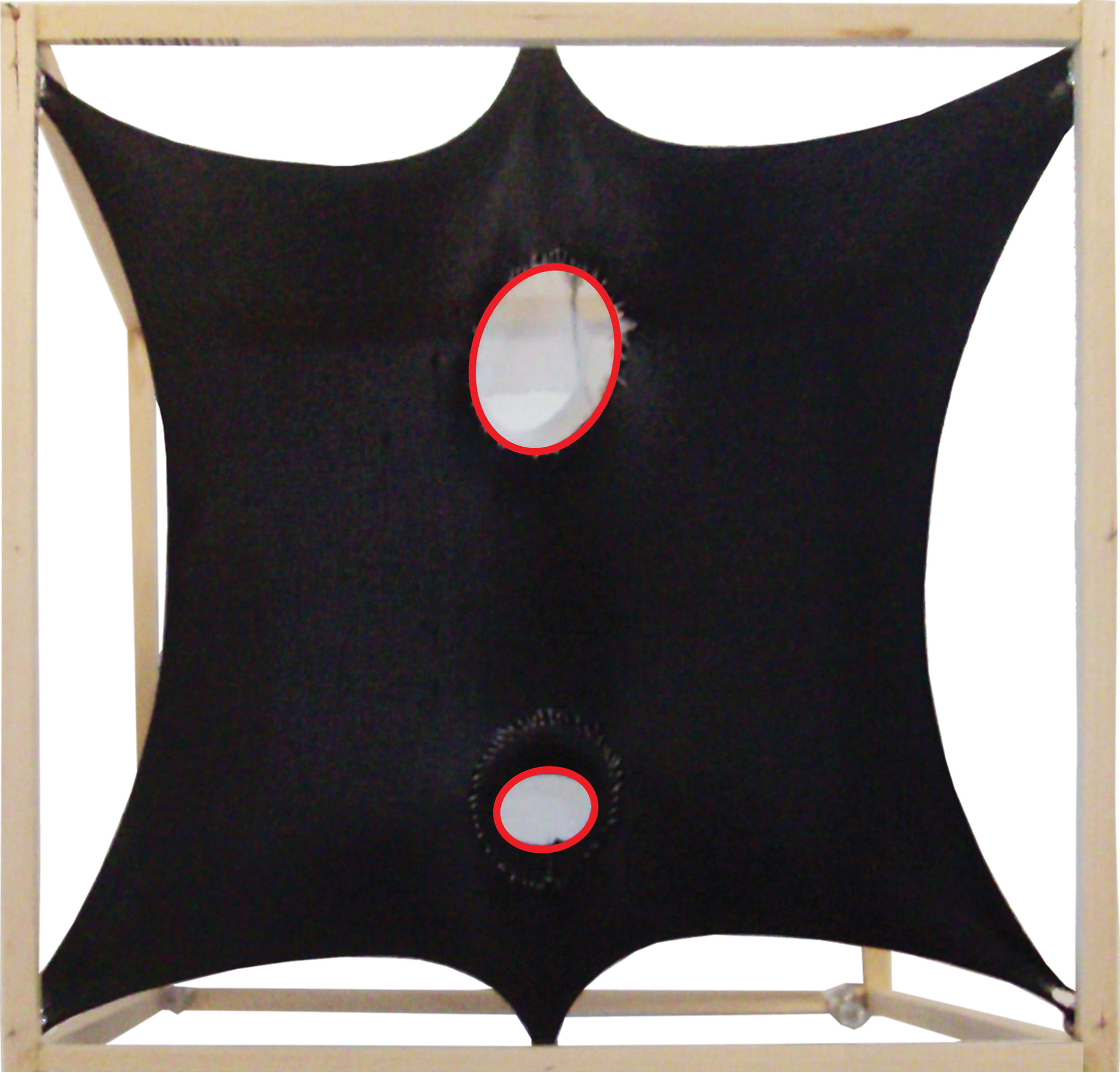
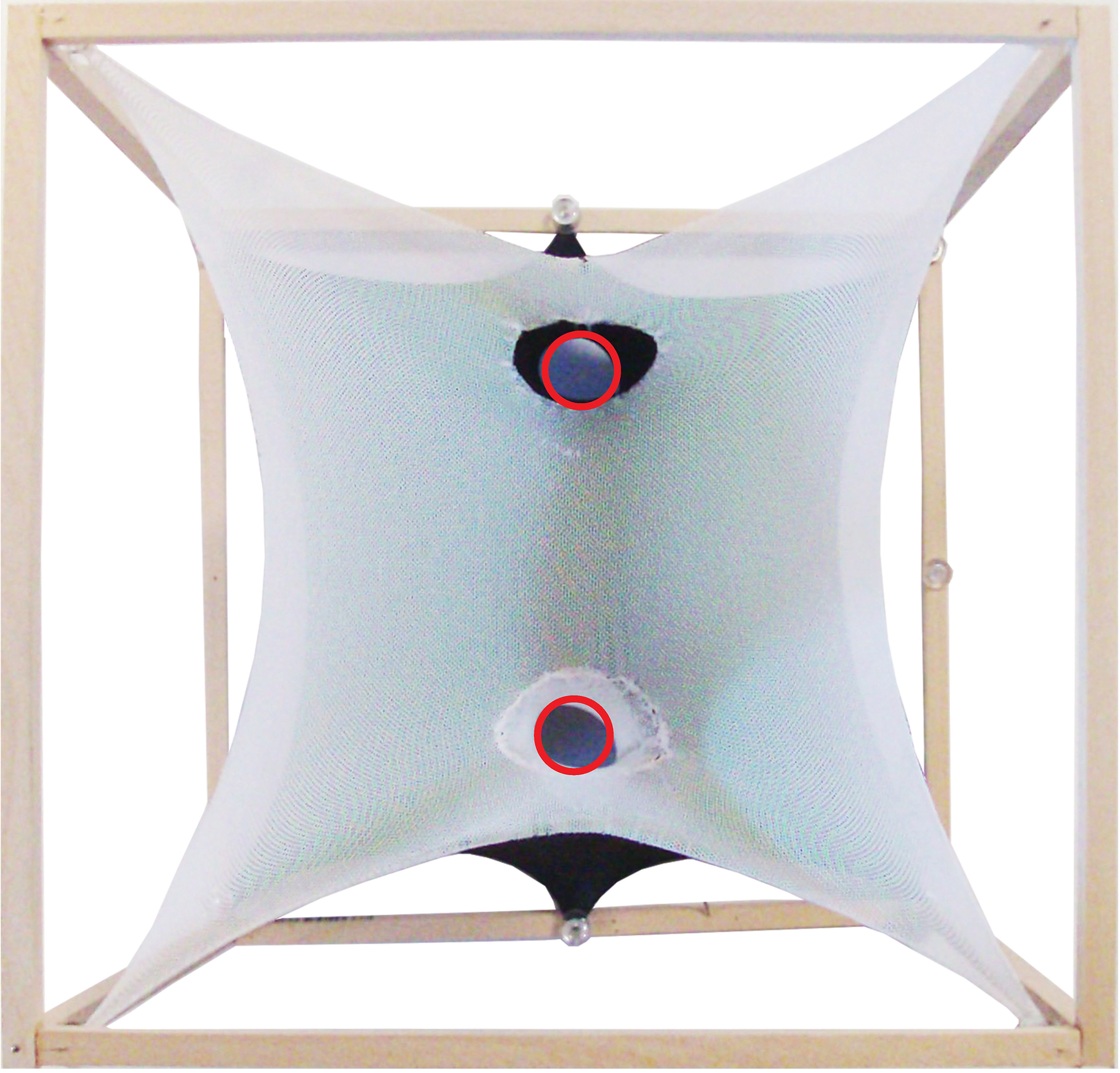
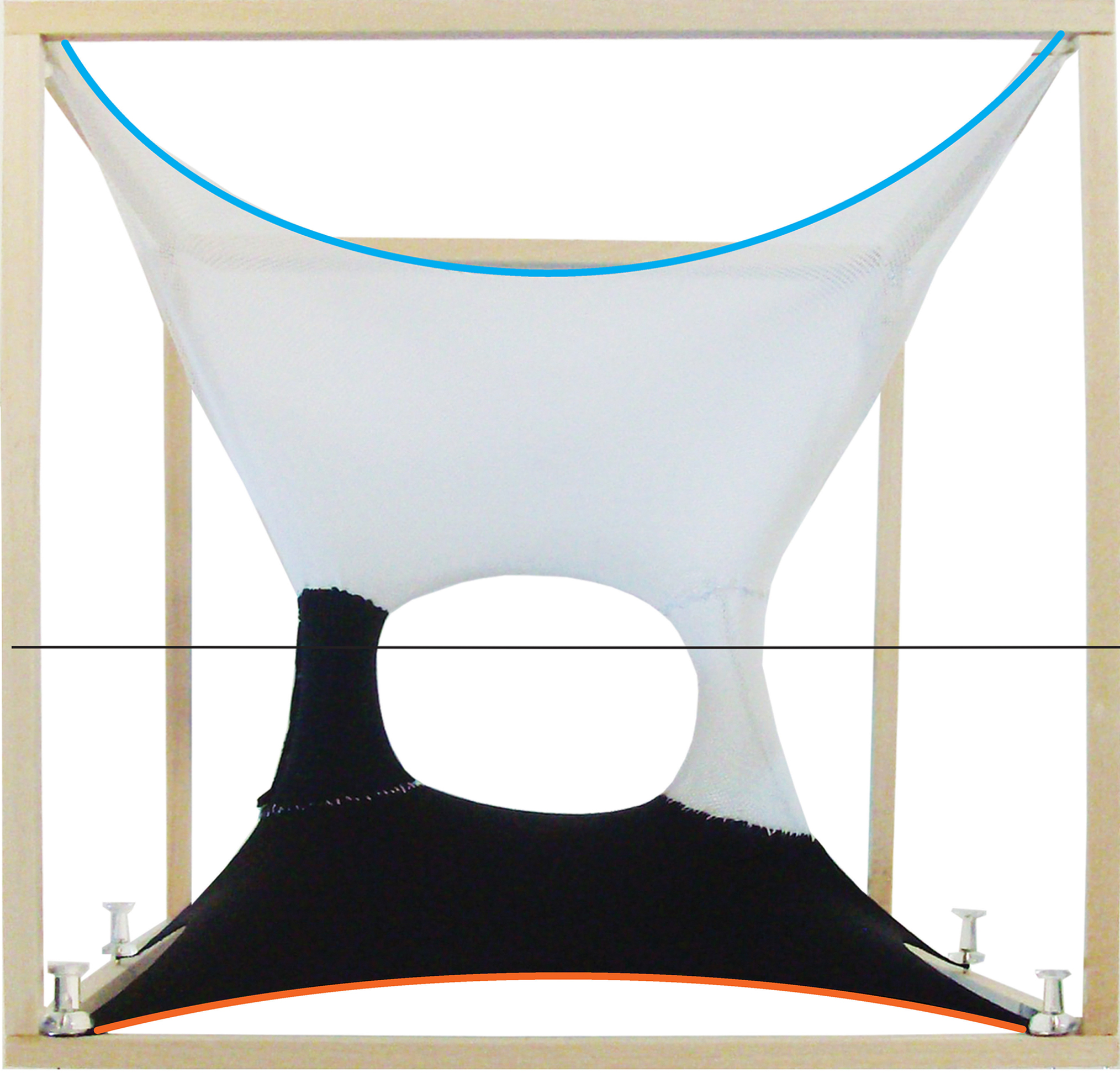
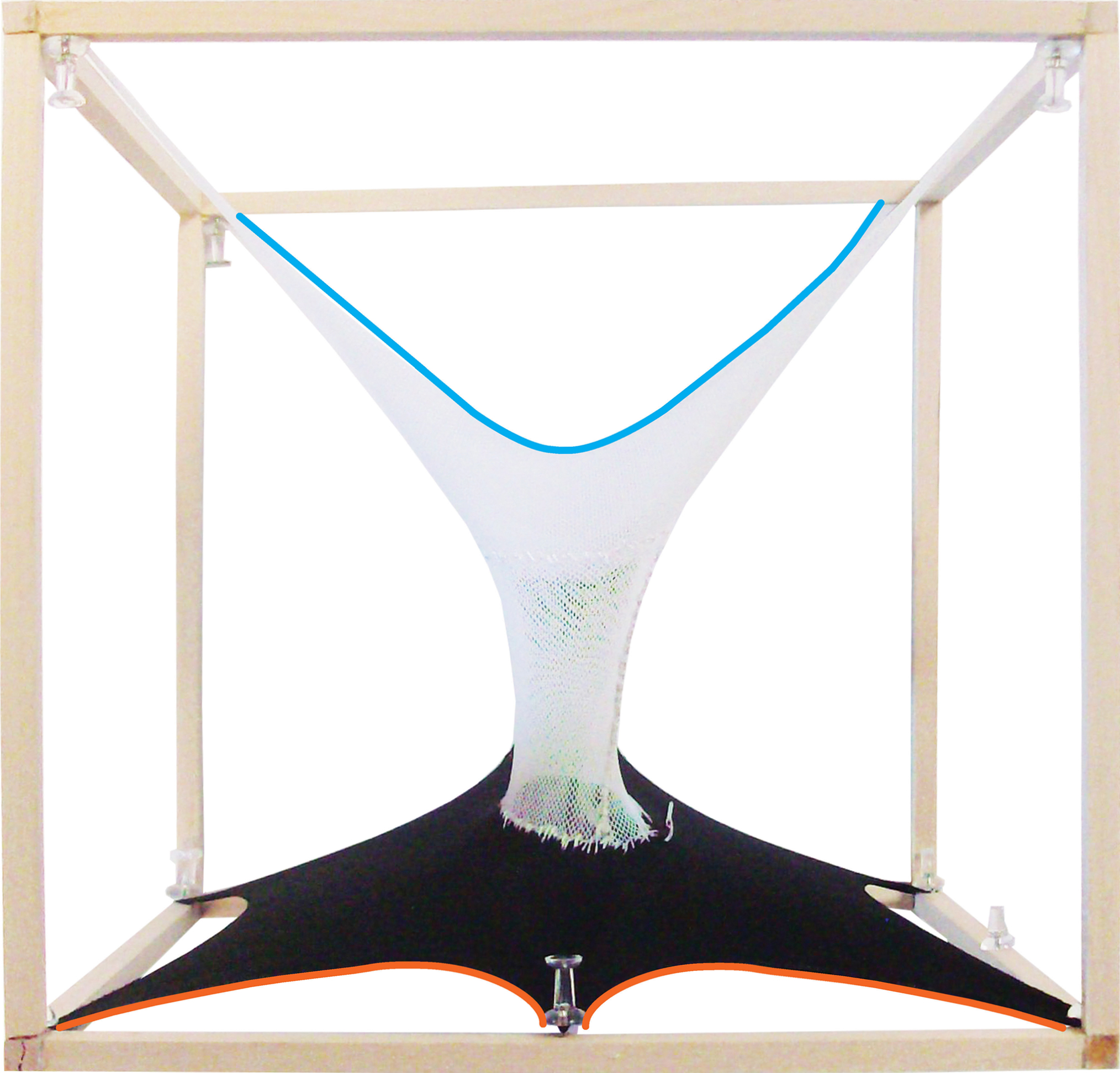
video of the project here
.
Learn more about this fascinating project here.
This fast-paced extracurricular workshop studied elastic fabrics' ability to portray and engage the phenomenon of emergent, self-organizing and unpredictable form.
The workshop studied emergence as the natural, decentralized, non-hierarchical phenomenon of self-organization of form as yielded by the development of manual algorithms and logical processes via analog computation, and as influenced by material properties, context and other factors.
MIT’s Silkworm Pavilion experiment, a precedent which stimulated questions on the parameters of emergence, is a peculiar case study where natural agents that don't seem to display the survival-guided social behaviors of animal groups -such as the ant colony- create emergent complex form when introduced to a man-made medium.
Initially, the experiment aimed to allow free agents to determine the fabrics' points of attachment, hence allowing form-making though a bottom-to-top approach, and starting with self-organizing, basic, independent and computational agents working together in a decentralized fashion. Live silkworms were introduced to the study aiming for this approach, resulting in a system that expresses the juxtaposition of the form made by the agent -as shaped by its natural, goal-oriented reasons- with elastic fabric media.
The agents in the experiments were specimens of the silkworm (bombix mori). They fabricate constructs more flexible in form under different spatial conditions not limited to two-dimensional or planar designs. The fabric media was initially meant to be interposed after the agent acted. Ultimately, however, experimenting with digital representations of algorithmic functions of natural growth determined the attachment points of the fabrics, and hence, their forms, after which, the agents were placed to observe their constructs. The animals were cared for and handled humanely during the experiment.
The fabric, thread and wood media, or HUBs (hybridity | unfoldings | bluntings) required parameters which would determine some of the agents behaviors (i.e. discouraging corner weaving), undermining totally decentralized emergence.
Differing from the silk pavilion, the experiment was not an attempt to express future possible material applications, but to express possible organic interactions between parameters of emergent form-making and man-made materials. The juxtaposition of and the interactions between natural and artificial elastic fibers was secondary.
The results were impressively organic, with the great majority of agents successfully completing their life cycles after spinning on both intended and unintended surfaces. Limitations were observed in controlling the agents’ spinning behaviors, but closely observing patterns, and opening questions about further media and the wide range of possible unpredictable results, as well as about the feedback of natural systems on artificial ones became a tangible source of interest.
This is a system with potential for complexity and further experimentation, and despite not fully achieving a bottom to top approach, it offers a close look at the influence of constructed spaces on natural behaviors.
The project’s paper was submitted to ACADIA, an international network of digital design researchers and professionals facilitating investigation into the role of computation in architecture, planning, and building science. The paper can be found here.
Collaboration: L. EspinozaThis fast-paced extracurricular workshop studied elastic fabrics' ability to portray and engage the phenomenon of emergent, self-organizing and unpredictable form.
The workshop studied emergence as the natural, decentralized, non-hierarchical phenomenon of self-organization of form as yielded by the development of manual algorithms and logical processes via analog computation, and as influenced by material properties, context and other factors.
MIT’s Silkworm Pavilion experiment, a precedent which stimulated questions on the parameters of emergence, is a peculiar case study where natural agents that don't seem to display the survival-guided social behaviors of animal groups -such as the ant colony- create emergent complex form when introduced to a man-made medium.
Initially, the experiment aimed to allow free agents to determine the fabrics' points of attachment, hence allowing form-making though a bottom-to-top approach, and starting with self-organizing, basic, independent and computational agents working together in a decentralized fashion. Live silkworms were introduced to the study aiming for this approach, resulting in a system that expresses the juxtaposition of the form made by the agent -as shaped by its natural, goal-oriented reasons- with elastic fabric media.
The agents in the experiments were specimens of the silkworm (bombix mori). They fabricate constructs more flexible in form under different spatial conditions not limited to two-dimensional or planar designs. The fabric media was initially meant to be interposed after the agent acted. Ultimately, however, experimenting with digital representations of algorithmic functions of natural growth determined the attachment points of the fabrics, and hence, their forms, after which, the agents were placed to observe their constructs. The animals were cared for and handled humanely during the experiment.
The fabric, thread and wood media, or HUBs (hybridity | unfoldings | bluntings) required parameters which would determine some of the agents behaviors (i.e. discouraging corner weaving), undermining totally decentralized emergence.
Differing from the silk pavilion, the experiment was not an attempt to express future possible material applications, but to express possible organic interactions between parameters of emergent form-making and man-made materials. The juxtaposition of and the interactions between natural and artificial elastic fibers was secondary.
The results were impressively organic, with the great majority of agents successfully completing their life cycles after spinning on both intended and unintended surfaces. Limitations were observed in controlling the agents’ spinning behaviors, but closely observing patterns, and opening questions about further media and the wide range of possible unpredictable results, as well as about the feedback of natural systems on artificial ones became a tangible source of interest.
This is a system with potential for complexity and further experimentation, and despite not fully achieving a bottom to top approach, it offers a close look at the influence of constructed spaces on natural behaviors.
The project’s paper was submitted to ACADIA, an international network of digital design researchers and professionals facilitating investigation into the role of computation in architecture, planning, and building science. The paper can be found here.